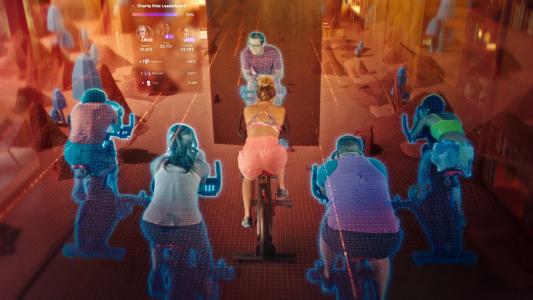If you want to see the fragility of the incredibly complex supply chains which link the world, the ships bobbing off the California coast are pretty indicative.
Ships and their shipping containers, carrying everything from Halloween decorations to toys to furniture to electronics, are stuck at loggerheads in Long Beach and other ports. Supply chains, already complex, have been broken by an invisible force: SARS-CoV-2.
“There have been events over the years that have impacted supply chains, but the scale at which COVID-19 affected global supply chains and the domino effect of lockdowns was second to none,” Vikram Murthi, vice president of industry strategy at Llamasoft, which designs supply chains, told industry publication Supply Chain Magazine.
COVID-19 has put incredible strain on the world’s supply chains.
Future lockdowns and challenges are sure to arise, Murthi says, putting the onus on businesses to shore up their supply chains and figuring out how to respond to threats as quickly as possible.
To do so, many companies are turning to detailed, AI-driven simulations of their entire supply chain. Can these “digital twins” save supply chains?
Creating a digital twin: A digital twin uses advanced analytics and as much data as possible to create accurate models of supply chains, from soup to nuts; it’s a business in a box.
The information fed into the AI can include the basic logistical details of the companies involved in the supply chain, as well as data about external influences: consumer behavior, geopolitical and socioeconomic trends, even insights gleaned from the media, MIT Technology Review reports.
Companies like Google can supplement their clients’ digital twins with weather information drawn from Google Maps. Other digital twins are more localized, taking a company’s existing supply chain management data and using it to run “what if?” scenarios to help add ever more data to its learning set. It’s similar to how AlphaGo learned how to play go and chess, Technology Review points out, except instead of playing itself in games over and over again, the digital twin AI “plays” in supply chains.
“This is where we get into the whole secret of ‘Why is AI smart?’” Chris Nicholson, founder of AI logistics firm Pathmind, told Technology Review. “It lives more than we do, in these many different worlds, some of which have never existed before.”
An AI digital twin uses as much data as possible to create accurate models of supply chains.
Optimizing supply chains with AI: The intricacy and detail of digital twin supply chains provides companies with a sandbox of sorts to play in.
According to Murthi, running “what if?” scenarios through the digital twins — what if a nor’easter pummels Port Newark? What if my chip manufacturer is late on my order? What if the longshoremen are on strike? — can allow companies to predict problems in advance, and begin to design solutions.
It’s that ability to see ahead which can be the biggest challenge for companies, Hans Thalbauer, managing director of Google’s supply chains and logistics team, told Technology Review.
“It doesn’t matter which company you talk to,” Thalbauer said. “Everyone in the supply-chain world will tell you they don’t have the visibility they need to make decisions.”
Companies can use digital twins to make better supply chains, as well as design plans for possible disasters — like a future pandemic.
Once that digital twin has been created, companies can use it to help optimize supply chains in both the short and long terms, as well as design plans for possible disasters — like a future pandemic.
Digital twins won’t solve the world’s shipping problems, MIT’s David Simchi-Levi, who has created digital twins of supply chains for numerous companies, told Technology Review. It won’t allow ships to carry more shipping containers. But it can provide insights and warnings.
“Digital twins allow us to identify issues before they happen.”
We’d love to hear from you! If you have a comment about this article or if you have a tip for a future Freethink story, please email us at tips@freethink.com.
